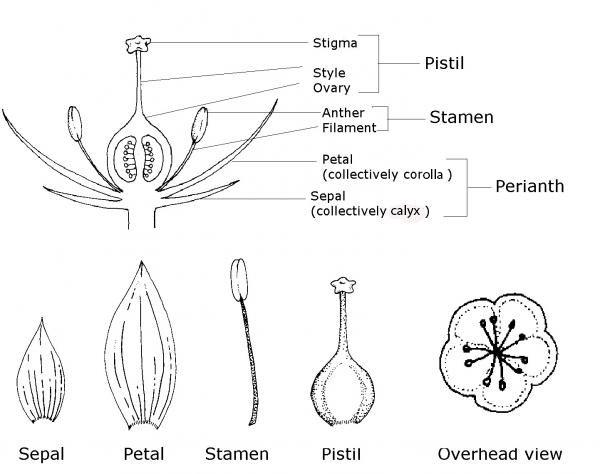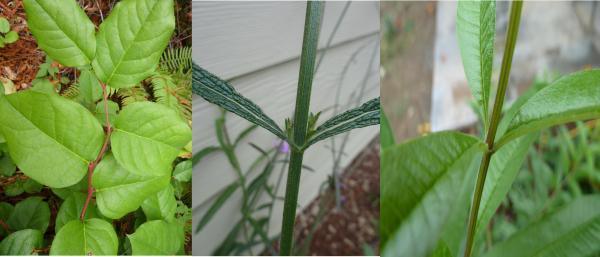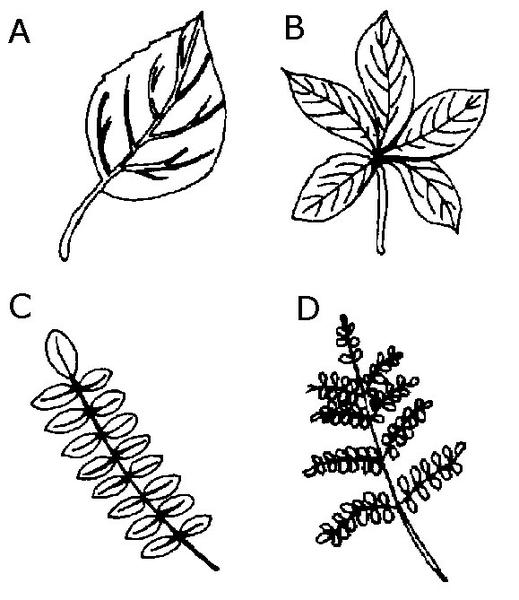How to use the Plant Toolbox
Looking for the glossary?
CONTENTS
About
The Extension Gardener Plant Toolbox is designed to help NC consumers find plants that will thrive in their gardens and landscaping needs. The Plant Toolbox is an interactive tool that allows users to search for plants by common or scientific name or by tags. It also allows a list of plants to be filtered by horticultural needs, plant characteristics, landscape use, wildlife value, fire resistance, and more. The Plant Toolbox was created with funding from NC Extension and the Center for Integrated Pest Management. A dedicated team of Extension Master Gardener℠ volunteers updates and improves the site and contributes photos.
Introduction
- Video Introduction to the Plant Toolbox (Plants, Pests, and Pathogens presentation from 2024. Approx. 23 minutes)
Help with Searching
- Search by Plant Name (or watch the 2-minute video tutorial)
- How to Use Tags
- Find a Plant for Specific Garden Conditions Using Search Filters (or watch the 2-minute video tutorial)
- Using the Quick Plant Lists (1-minute video tutorial)
Searching for Pollinator Plants and NC Native Plants
- How to search for NC native plants (2-minute video tutorial)
- How to find pollinator-attracting plants (3-minute video tutorial)
- How to plan for year-round availability of flowers for pollinators (2-minute video tutorial)
Other Actions
- How to Use the QR Code (2-minute video tutorial)
- Identify a Plant
- How to Make a Shopping List (2-minute video tutorial)
- Printing a Plant Profile or Shopping List
- Using the Plant Toolbox on a Mobile Phone
- Adding the Plant Toolbox to your iPhone home screen.
General Information
- The Nomenclature of Horticultural Plants: An Explanation
- Scientific & Common Names Verification & Sources
- About Wildlife Information on the Plant Toolbox
- Fire Risk and Fire-Resistant Landscaping
- Invasive Species Determination
- USDA Plant Hardiness Zone Map
- Using Photos from this Site & Decoding CC Licenses
- Online Resources & Additional Tools
- Other Extension Gardener Resources
Glossary
Looking for an extensive glossary? See the NC Extension Gardener Handbook Glossary
Go here for a fun, interactive exercise useful in reviewing plant morphology terms.
| Term | Definition |
|---|---|
| Alternate | A leaf arrangement in which there is one leaf per node. They are usually borne on alternating sides of the stem. |
| Appendage | A part of a plant that is a modification of a stem, root or leaf. |
| Attracts | What beneficial insects, birds or other wildlife the plant attracts. |
| Available Space to Plant | Measured in feet, the length of the diameter of a circle, with the plant at its center, that is required for a plant to reach its mature size unobstructed. |
| Bark Attachment | The appearance of bark and how tight or loose it is to the trunks of woody plants. |
| Bark Color | The color of the outer bark of a woody plant. |
| Bark Plate Shape | The shape of flat sections of bark separated by furrows. |
| Cone | The reproductive structure of a conifer; a strobilus. Seed cones are usually woody, with overlapping scales on which the seeds are borne. Pollen cones are typically non-woody, with small overlapping scales bearing pollen sacs. |
| Decussate | Describes pairs of organs (typically, leaves) in which each pair is rotated 90 degrees around the stem from the pair below or above. When view from above, the leaves form a cross. |
| Design Feature |
The design function of a plant in the landscape. |
| Distichous | In two rows on either side of the stem (said of opposite or alternate leaves). Said of leaves all in one plane. |
| Flower Bloom Time | The season in which flowers are in bloom. |
| Flower Color | The primary color (or colors) of the petals, or sometimes other structures like sepals, tepals, or reproductive organs of the flowers. |
| Flower Inflorescence |
A grouping or cluster of flowers on a stem in various formations.
|
| Flower Petals | The number of individual petals on a single flower. |
| Flower Shape |
The form and anatomy of the individual blooms on a plant.
|
| Flower Size | How large the individual blossoms are in inches. |
| Flower Value to Gardener | The positive characteristics the flowers of a plant bring to the gardener. |
| Fruit Color | The color the fruit appears at maturity. |
| Fruit Display Harvest Time | The time of the year when fruits would be showy and/or when they would be ready to harvest. |
| Fruit Length | The average length of the fruiting body in inches. |
| Fruit Type | The structure developed from a ripened ovary, or ovaries, of a plant. |
| Fruit Value to Gardener | The positive characteristics the fruits of a plant bring to the gardener. |
| Fruit Width | The average width of the fruiting body in inches. |
| Growth Rate | How fast a plant grows. This is a factor of light, nutrients, water, and temperature. |
| Habit | Shape, form, and appearance of a plant. |
| Herbaceous |
A soft, pliable, usually barkless shoot or plant. Distinct from stiff, woody growth. |
| Herbaceous perennial | A plant that dies back in the winter and regrows from the crown in spring. Evergreen herbaceous perennials (e.g. African violet, Christmas fern) do not die back. |
| Indusium | (in ferns) A flap of tissue that covers the sorus. A false indusium is present in some ferns and is defined as the edge of the leaf or frond that folds over to cover the sori. See illustration under Sorus. |
| Landscape Location | Places in the landscape that might be influenced by different environmental factors. |
| Landscape Theme | Gardens defined by a particular geographical style, certain identifiable plant characteristics, or color palette. |
| Leaf Apex |  |
| Leaf Arrangement |
How leaves are positioned on the stems of plants. Alternate, Opposite or Whorled
|
| Leaf Base | 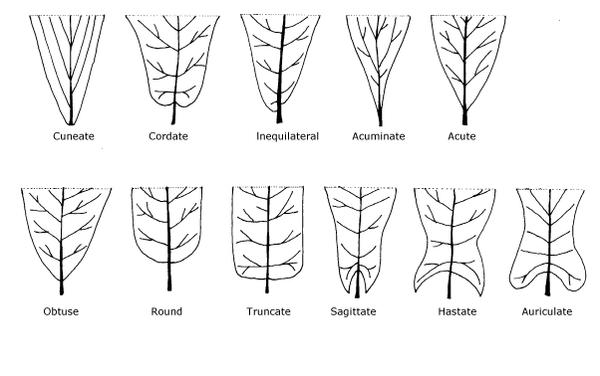 |
| Leaf Characteristics | What type and how long leaves stay on a plant. |
| Leaf Color | The color or colors of the blades of the leaves during the growing season. |
| Leaf Fall Color | The color the leaves turn in autumn. Not all plants have a change of color with the seasons. |
| Leaf Feel | How the leaf feels to the touch. |
| Leaf Hairs Present | If there are hairs on any surface of the leaf. |
| Leaf Length | The average length of the blade of the leaf in inches. |
| Leaf Margin |
The shape of the edge of the leaf blade.
|
| Leaf Parts | 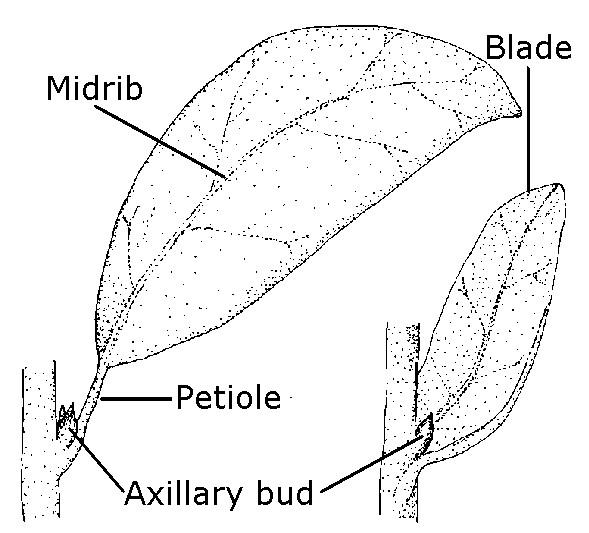  |
| Leaf Shape |
The varying shapes of individual leaf blades.  |
| Leaf Type |
The form and number of leaf blades which differ greatly among plants. A) Simple; B) Palmately compound; C) Pinnately compound; D) Bipinnately compound
|
| Leaf Value To Gardener | The positive characteristics leaves of a plant bring to the gardener. |
| Leaf Width | The average width of the blade of the leaf in inches. |
| Light | The amount of sunlight required for optimum plant health. |
| Maintenance | The amount of activity required to keep a plant in top condition. |
| NC Region |
North Carolina is divided into three regions Mountains, Piedmont, and Coastal, different plants thrive in these different regions.
|
| Opposite | A leaf arrangement with two leaves per node. They are usually borne on opposite sides of the stem. |
| Pinna & Pinnule |
In ferns, the pinna is the first-order segment or leaflet, and the pinnule is the second-order segment or leaflet.
|
| Plant Type | There are many different types of plants, and some plants can be categorized by more than one type, such as Annual and Wildflower. |
| Problems | Factors to consider when choosing a plant that may cause issues in the landscape depending on location and use. |
| Resistance To Challenges | Concerns in the landscape and the environment to which a plant is particularly resistant. |
| Rhizome | An underground, horizontal stem capable of producing shoots and roots from each node. Adj.: rhizomatous |
| Soil Drainage | How well water drains out of soil after a reasonable amount of time. |
| Soil Ph | A measure of acidity or alkalinity in the soil that is optimum for plant growth. |
| Soil Texture | The type of soil(s) that provide optimum growing conditions for the plant. |
| Sorus (pl. sori) |
(in ferns) A cluster of sporangia on the underside of a fern frond.
|
| Sporangium (pl. sporangia) | (in ferns) A spore-containing structure or capsule. |
| Stem Color | The color of the stems and twigs of a plant. |
| Stipe | In ferns, the stalk of the frond (leaf), analogous to the petiole of a leaf from a flowering. See above under Leaf Parts. |
| Stolon | A slender stem that creeps along the surface of the ground and is capable of producing new shoots or plants, as in strawberry. Adj.: stoloniferous |
| Sympodial Growth | A bifurcating branching pattern where one side branch develops more strongly than the other, where by the stronger branches form the primary shoot and the weaker branches appear laterally. This often gives a zig-zag appearance. |
| Texture | The perceived surface quality of the plant compared to other surrounding plants. |
| USDA Zone | A geographically-defined zone that tells which plants are capable of growing defined by the plant's ability to withstand the zone's minimum temperatures. |
| Whorled | A leaf arrangement in which three or more leaves are borne at each node. It can often occur on the same plants as opposite leaf arrangement. |









